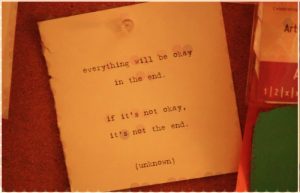The Challenge: Fantasies are awesome but how can we make them come true?
The Science: Indulging in fantasies makes us feel good but can keep us from them.
The Solution: Here’s how to turn your fantasies into reality.
You want something, and you want it now. The fancy car, the million dollars, that hot date with your crush, or that tropical island vacation. Or maybe your fantasies are driven by more pressing needs: landing that promotion, going back to school, obtaining that dream job, or moving to a different city.
So what do we usually do? We either indulge in it – making it richer with details and enjoying the pleasant feelings it brings, or we dwell on all the obstacles that stand in our way and feel crummy. Either way, the fantasy remains just that: a fantasy. A pie in the sky.
Psychologists of course have a fantasy theory to explain our tendency to “indulge” (in the fantasy) and “dwell” (on the obstacles): it is called “fantasy realization theory”.
Fortunately for us, they also include a third tendency – and this is the helpful part. It’s a strategy to increase the likelihood of taking action to achieve our dreams called “contrasting.”
If you just fantasize about achieving your dream, it feels good, which can be bad. Our body treats the visualization of achievement as a “mission accomplished” signal and a relaxation response follows. Indulging in the fantasy can be good to boost your mood but definitely not good to motivate you to take action.
If you dwell on the obstacles that stand in the way, it feels too hard — and your brain promptly rattles off the following excuses: it takes too much time; it is too difficult; it can’t be done. You get discouraged, and you give up even trying.
BUT. If you contrast the fantasy of the future with obstacles that stand in the way (we will show you how momentarily), two very useful things happen:
- You get energized to act. Literally.
- You can formulate effective action plans that will help you deal with obstacles when they appear. In this way, you can keep the momentum going.
Researchers showed that this one-two double punch is effective in helping people pursue goals such as the following: eating healthy and exercising more (health domain), improving study behaviors, school attendance, and academic grades (academic domain), being less insecure, and cooperating more (interpersonal domain). Furthermore, this contrasting strategy comes with an added benefit, which is the following: if you are not expecting success, i.e., if your fantasy is way out there or if you are not 100% convinced, engaging in mental contrasting will have you drop your unrealistic goal!
Let’s see how it can be done in practice. It will only take a couple of minutes. Grab pen and paper, or open a Word edit document, and let’s do it!
- Write down a goal you want to achieve (e.g., I want to be more productive at work);
- Write down a positive outcome of achieving that goal (e.g., I would feel a sense of accomplishment at the end of the day);
- Now relax and take the time to visualize as vividly as possible what it would be like to get that positive outcome (e.g., visualize what it would be like to feel that sense of accomplishment);
- Write down what stands in the way of achieving your goal (e.g., I spend too much time on Facebook);
- Write down when and where this obstacle is most likely to occur (e.g., when I get tired or low energy);
- Write down how you can overcome this obstacle (e.g., I will get up, drink water, and stretch instead).
- Last but not least, write down your implementation intentions in an if… then… format. Make sure that they include a specific time and place (the if part) and a specific behavior you plan to perform (the then part). In our example, we would have:
– If I get tired when sitting at my desk and working with my computer [obstacle; what, where, and when], then I will get up and stretch [specific action to overcome the obstacle].
Now go turn those fantasies into action!


